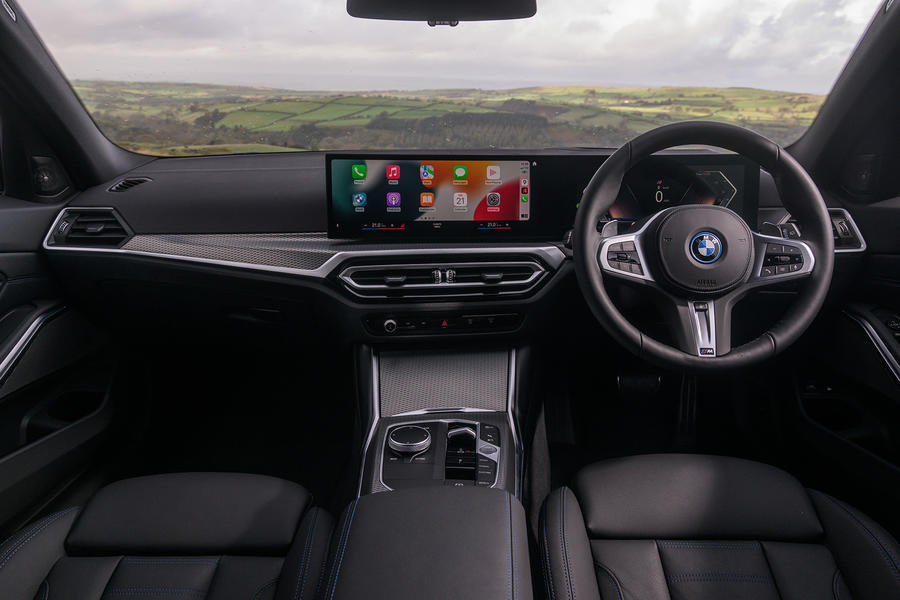We were impressed by the updated petrol saloon. Now for the plug-in hybrid estate
Given that the BMW 3 Series variants offered since 2019 have been the most successful in history, with 1.1 million sold, you can forgive BMW for not making many changes for the refreshed models.
Even so, the 2022 cars incorporate useful improvements – which seem to work especially well in arguably the most versatile and economical variant, the 330e Touring xDrive. It has the short-haul economy of a PHEV, the versatility of a wagon and great all-weather traction via a mostly unobtrusive electronically managed four-wheel drive system.
The visual changes aren’t dramatic: some alterations to the twin kidney grille, thinner headlights and new air vents low down on the front of the body, where the foglights were.
![]()
In the cabin, it’s the fascia that gets the biggest changes, a gigantic central touchscreen and a slightly smaller digital display ahead of the driver for essential instruments. Thankfully, the 3 Series keeps its iDrive controller and the stereo still has the classic on/off/volume knob.
This M Sport edition is extremely well equipped, but there’s still a blizzard of available options. Our test car’s base price ran to £49,055, but its extras (including red brake calipers, adaptive headlights, a heated steering wheel, adaptive suspension and a Harman Kardon hi-fi) pushed that up to £57,410.

The engine is the same 182bhp 2.0-litre petrol four used in various lesser models, but it’s accompanied by a 108bhp electric motor in the gearbox (fed by a 12kWh battery), putting up to 288bhp under your foot, including a 10-second overboost worth 10-15%. That has the potential to deliver 0-62mph in 5.9sec and a 139mph top speed.
The electric-only range is put at 32-34 miles, which probably means up to 30 miles in the real world.
According to the practically meaningless statutory MPG rating, you will get between 148.7- and 176.6mpg out of this 330e, but mid-40s is more likely in normal driving that mixes city with motorway. However, as with other PHEVs, if you drive it only on short hauls and make it frequently charged, it will sometimes use no petrol at all for extended periods.
The driver can choose between two levels of regenerative braking, which almost removes your need to use the friction brakes, the penalty for which is a detectable step when you brake harder and one mode of retardation is joined by the other. It’s more a curiosity than a problem.
The 330e is a fine car to drive: neat, neutral and very grippy in bends, with communicative steering as usual. It’s powerful, too, even if the four’s sound can’t hold a candle to the sporting sixes BMW continues to make.
The ZF eight-speed gearbox is its usual immaculate self: quick and smooth to change, responsive both to the paddles and (slightly more slowly) to the kickdown. Mostly it’s just unobtrusive. Small wonder BMW doesn’t sell a 3 Series with any other form of transmission.
The 3 Series has grown over the years, but there’s still a pleasant compactness to the Touring. It faithfully delivers the quality, sophistication and sportiness that we’ve long come to expect from 3 Series variants, and overlays all that with extra practicality and all-weather capability. It’s an excellent do-it-all choice.

Source: Autocar